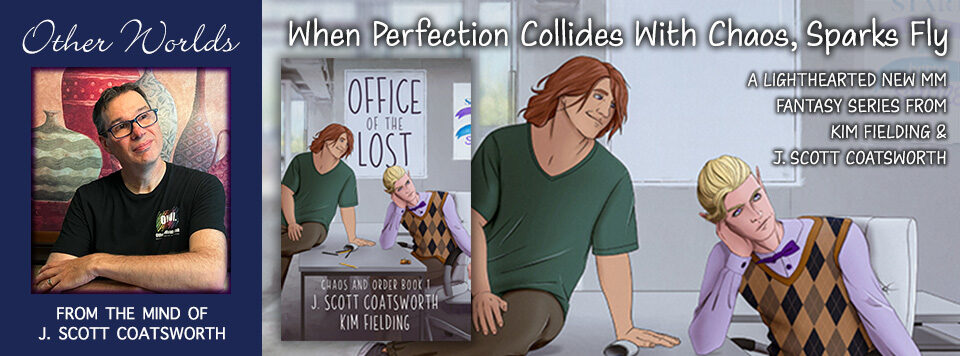
The manuscript is written, it’s gone through my beta readers and is finalized in third-draft form. And it’s ready to go out to the publisher/agent/pitch wars/wherever.
Almost.
There’s still one last step I take before unleashing my work onto an eager and unsuspecting world. (side note: can someone be both eager and unsuspecting?)
The fixit list.
Every author who has been around for long enough has one. It’s the list of things you know you do wrong, the ones you’ve been called on again and again by your editors but somehow never stop doing in the heat of writing.
I keep mine in Excel, but you can use Word, a journal, or even the coaster from the bar you drank away your writing sorrows in last night. Just start one.
So I pull up my file and methodically start working my way through my manuscript one last time, fixin all of these little things. And while it won’t ensure a perfect manuscript (if you ever figure that secret out, please let me know), it can help you turn in a much cleaner one and start focussing on not making these errors in the first place.
Here are my main fixit things:
- But…: I’m a big fan of starting off sentences with conjunctions for effect. And it can work really well, giving your sentences a different meter and making your reader pause for a second. But used too much, it becomes evident and tiresome. And you never want your writing to be tiresome. And so, put your conjunctions where they belong, for the most part, and only start off with them when you really have to.
- Then—he paused…: I am also crazy for em dashes and ellipsis… again it’s all about creating the pause—where you most want it—and varying your meter… so your sentence rhythm doesn’t become—let’s be honest—boring. But again, moderation is a virtue… so I usually cut out half of these in final edit. And remember… is for railing off mid-sentence, while…. is for the end of a sentence.
- He felt distant: I’m also really bad about using perception words as filters. You understand that I am telling you this, and you can feel that it’s true. You may have heard that filtering actions through perception filter words—appeared, felt, saw, knew, realized, watched, etc—distances the reader from the immediacy of the action. Now you can understand how it can bog down your writing. Dump these wherever possible—and don’t feel bad about it.
- It’s a little annoying: I also like to use size modifiers as shades of gray, even though it can be a bit bothersome to the reader, if not also a little distancing too. Why say she was a bit tired, when you can just go with full-on tired? Yeah, I know, that’s a little misleading. Sometimes you really do want that shading. But look at how often you do it, and again remove it except for the places you really want to use it to a little effect. You’ll get more punch for it, if you do. At least, a bit.
- That’s beginning to bug me, too: My characters are forever beginning and starting things (and rarely ending them, damn them). Beginning with your next book, try dropping most of these. Start using them less, and soon you will only be beginning things when they really need most to be begun.
- It’s far form over…: We all have a dreaded word or two that we can’t, for the life of us, ever spell right the first time around. Mine is “from.” I can’t tell you how many times my characters have run form danger, or taken the magic ring form someone else. So with every manuscript, I dutifully search for all the “forms” and change the ones that are wrong back to “from”.
- He said and grunted and shouted: “I don’t use dialogue tags (he said, she said) except when they are absolutely necessary to distringuish the speaker,” he said. Then he shouted “Instead, I use character actions, which also give me the opportunity to insert a little more color and description into the story.” He elaborated, whispering: “So in the end, I search out all remaining instances of ‘said’ and replace them with character actions wherever possible.”
- They nodded, almost breaking their neck: One of the character actions I use is the nod. *nods* My characters are generally very agreeable sorts, and they are almost constantly nodding, which begins to look really odd, especially when it’s at the beginning of each paragraph and—you guessed it—prune them back like weeds.
- I found myself passive: I’m also a massive over-user of the passive voice, managing to use it far too often in my work. Like perception filters, this can have the effect of causing your writing to seem distant, unapproachable. Much better to do something than to be able to do it, or to find oneself doing it. I do find value in using the passive tense—sometimes we really do want to remove the agency form our characters–but it can be easily overused. Just be aware of when and why you are using it.
- I started this, finishing it: Ah, the Impossible Simultaneous Act (or ISA). I opened the door the other day, walking through it, and I got filled with splinters. ISA’s are conjugated verbs followed by a verb infinitive, which suggests the secondary action is taking place at the same time as the first, being sometimes an impossibility. Search for these, and change the second verb to something like “and then he…”
Those are my main fixits, and my editors have told me my manuscripts are usually very clean when I turn them in.
To my writing friends, what are some of yours?
